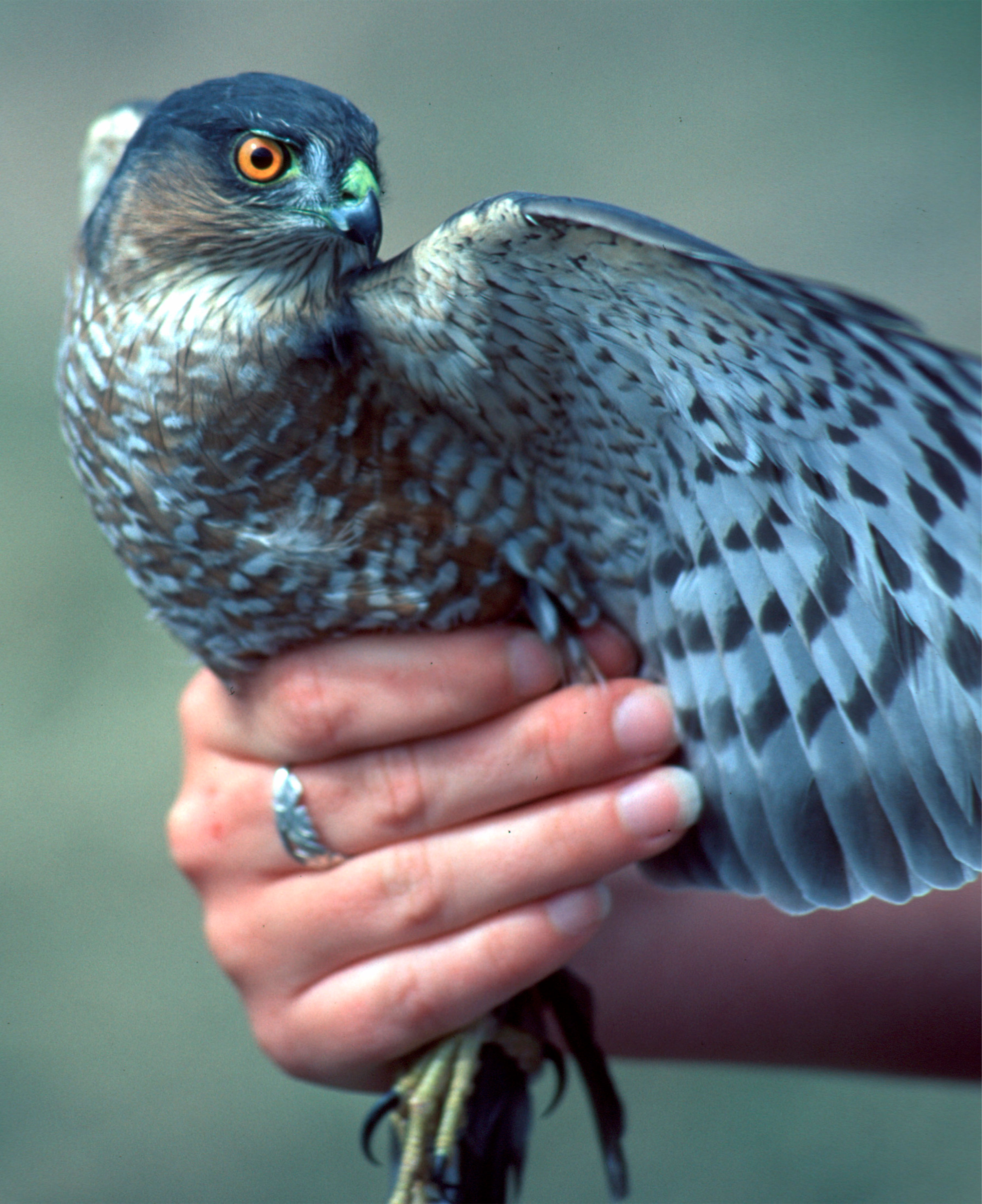
6 Hot Spots for Watching the Fall Bird Migration
6 Hot Spots for Watching the Fall Bird Migration
Autumn offers some of Minnesota’s best bird watching, with mild temperatures, congregating flocks and vibrant forests enhancing bird hikes and road trips.
The Mississippi River Flyway is one of North America's most traveled routes during spring and fall bird migrations. Roughly 325 species of birds and about 40 percent of waterfowl use this "super highway" during migration. Minnesota is well-positioned in this major flyway, with lots of smaller flight paths and numerous Important Bird Areas (IBAs) scattered throughout the state.
Here are some of the top places to witness Minnesota's spectacular fall migration.
-
Hawk Ridge Observatory, Duluth

Bird banding at Hawk Ridge Observatory in Duluth
Hawk Ridge Observatory, DuluthWhen winds blow to the south and east, birders flock to Hawk Ridge along Skyline Drive high above downtown Duluth and the world’s most inland seaport. Hawk Ridge is one of North America's premier sites to view migrating birds, especially birds of prey.
The thermals rising up over our Great Lake allow the birds to expend less energy by soaring along the shoreline instead of flapping their wings. Twenty migrating raptor species and numerous songbirds, (and even dragonflies!) skirt the vastness of Lake Superior along this flyway, many stopping to rest on Duluth’s steep hills. More than 100,000 broad-winged hawks have been spotted at Hawk Ridge on a peak migration day.
While in Duluth, stop at Park Point where it is possible to see more than 20 species of warblers that come to rest along the sandbars beyond the Aerial Lift Bridge.
-
Minnesota River Valley, Ortonville

Minnesota River and Lac qui Parle State Park
Minnesota River Valley, OrtonvilleHit the right day, and a cacophony rises from western Minnesota’s Big Stone Lake and Lac qui Parle state parks, both situated along lengthy, wide stretches of the Minnesota River. Hundreds of thousands of waterfowl meet here as they leave prairie potholes to the northwest, according to Bob Dunlap, a zoologist with the Minnesota Department of Natural Resources.
Lac qui Parle means “the lake that speaks,” which the Dakota Indians called this widening of the river that draws avocets and other shorebirds, ducks, five species of geese and American white pelicans.
-
Minnesota River Valley, Bloomington
Minnesota River Valley, Bloomington
Look for guided hikes and trails threading through the Long Meadow Lake Unit of the Minnesota Valley National Wildlife Refuge. The visitor center near Mall of America offers an introduction to its 14,000 acres that stretch south for 70 miles. Eight species of nesting warblers can be found in the floodplain habitats, including prothonotary warblers which are a species of concern. Warblers often can be spotted along the bass ponds and from the Old Cedar Avenue pedestrian bridge.
-
Sherburne National Wildlife Refuge, Zimmerman

Sherburne National Wildlife Refuge sandhill cranes / Kris Spaeth
Sherburne National Wildlife Refuge, ZimmermanThe wetlands at Sherburne National Wildlife Refuge provide prime habitat for up to 40 pairs of sandhill cranes, but in September and October, thousands of cranes gather at the refuge before migrating south. Hear the guttural, ancient calls of the cranes as they take off at sunrise and return by dusk to this 30,700-acre refuge north of the Twin Cities. A variety of oak savannah bird species can also be found in large numbers at the refuge including eastern bluebird, scarlet tanager and indigo bunting.
-
Agassiz National Wildlife Refuge, Thief River Falls
Agassiz National Wildlife Refuge, Thief River Falls
Take the 4-mile auto tour at Agassiz National Wildlife Refuge to glimpse some of the 300 species of birds that can be seen among this northwest Minnesota refuge’s 61,500 acres that include coniferous bog and sedge meadows. The refuge hosts roughly 100,000 ducks and 25,000 geese during the fall migration. Other commonly seen migrants include sandhill cranes, red-necked grebes, great blue herons and Franklin's gulls. Also watch and listen for one of the resident moose which are most often seen in September and October.
-
Weaver Bottoms, Mississippi River Valley

Fall driving outside of Taylor's Falls / Paul Vincent
Weaver Bottoms, Mississippi River ValleyActing like a migration super highway to the south, the entire Mississippi River corridor draws birds of all shapes and sizes, with both Frontenac and Great River Bluffs state parks offering scenic hikes along the route. Don’t miss the back channels, especially near Weaver, where tundra swans congregate mid-October to November.





